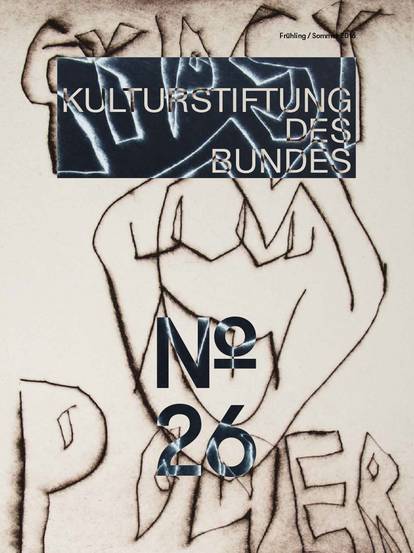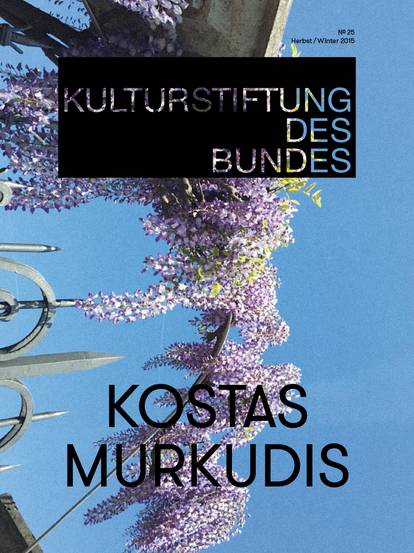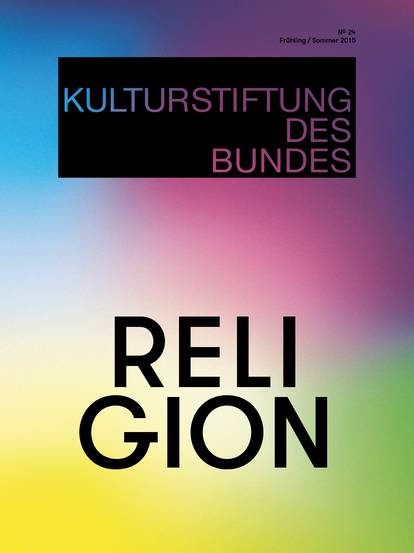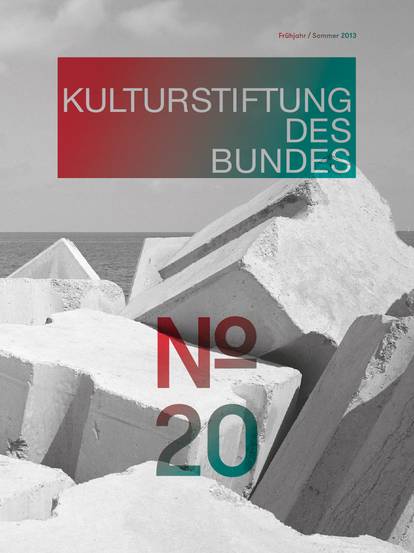The author and ethnologist Sarah Khan visited the Oderbruch region in 2018 where she spoke with residents there. She related their often adventurous stories in her report "Hohe Maßnahmen" (High Measures) (Magazine 31, 2018). The Swabian poet Carolin Callies conducted her own investigation of rural areas. In her volume of poetry "wo die alb anfängt, dort hört der zug auf"(where the alps begin is where the train stops), Callies captures the images and emotions evoked on her travels through the Swabian Alps. Both the Oderbruch and Swabian Alps are model regions supported by the programme TRAFO – Models for Culture in Transformation.
Origins and changes of venue are a defining theme for the German-Bosnian writer Saša Stanišić. In his very early text "Colon Nomad" (Magazine 6, 2005), which the now multiple award-winning author wrote for the Magazine of the Federal Cultural Foundation prior to his debut novel "How the Soldier Repairs the Gramophone", he describes his attempts – and occasional failures – to embrace the geographical and linguistic quirkiness of Germany and the Germans. It is an impressive reflection of the various dimensions of "homesickness" from a young immigrant’s point of view.
The (bilingual) poems by Valžyna Mort prove that poetry is a powerful medium to convey the loss of one’s homeland. The poems appeared in Magazine 11 before she published her internationally acclaimed volume of poetry "Factory of Tears" which has since been translated in numerous languages. The Belarusian poet, now living in the United States, paints a portrait of her childhood in a torn country: "And once again according to the annual report/ the highest productivity results were achieved / by the Factory of Tears".
The power and possibilities of languages in the extreme is the topic of a piece entitled "Aufgehoben" (Consumed) by the Sri Lankan author Senthuran Varatharajah which explores the boundaries between two bodies to the sound of Radiohead’s "Where I End and You Begin" (Magazine 34, 2020).
In the story "Who is Robin Green Touré" (Magazine 33, 2019), Juan S. Guse creates a male (or female?) protagonist as an example of extremely creative identity-building. Between pop-cultural references ranging from Neal Stephenson to Nintendo, the main character loses himself (or herself) in search of a legendary female video game programmer in increasingly metaphysical realms.

![[Translate to English:] Magazine 38](/fileadmin/_processed_/f/1/csm_Magazin38_Cover-Vorschau_921x1230_689f428dc3.jpg)
![[Translate to English:] Magazine 37](/fileadmin/_processed_/b/c/csm_Mag37_Cover-Vorschau_921x1230_b5129fdb2a.jpg)
![[Translate to English:] Magazine 36](/fileadmin/_processed_/2/a/csm_Cover_Magazin36__issuu_2f3cef97bb.jpg)





![[Translate to English:] Magazine 30](/fileadmin/_processed_/c/b/csm_magazin30_vorschau_9005f773d3.jpg)














